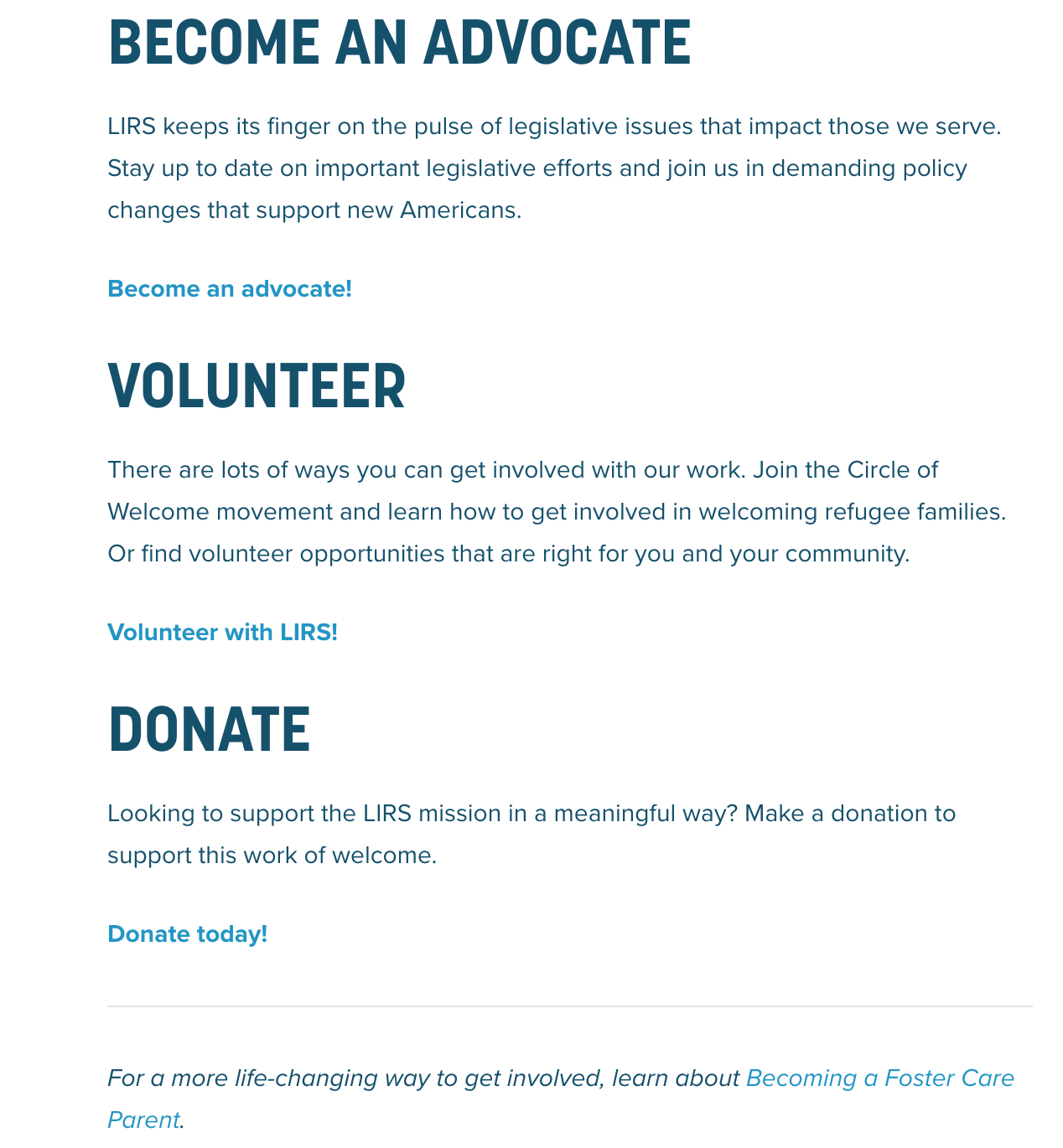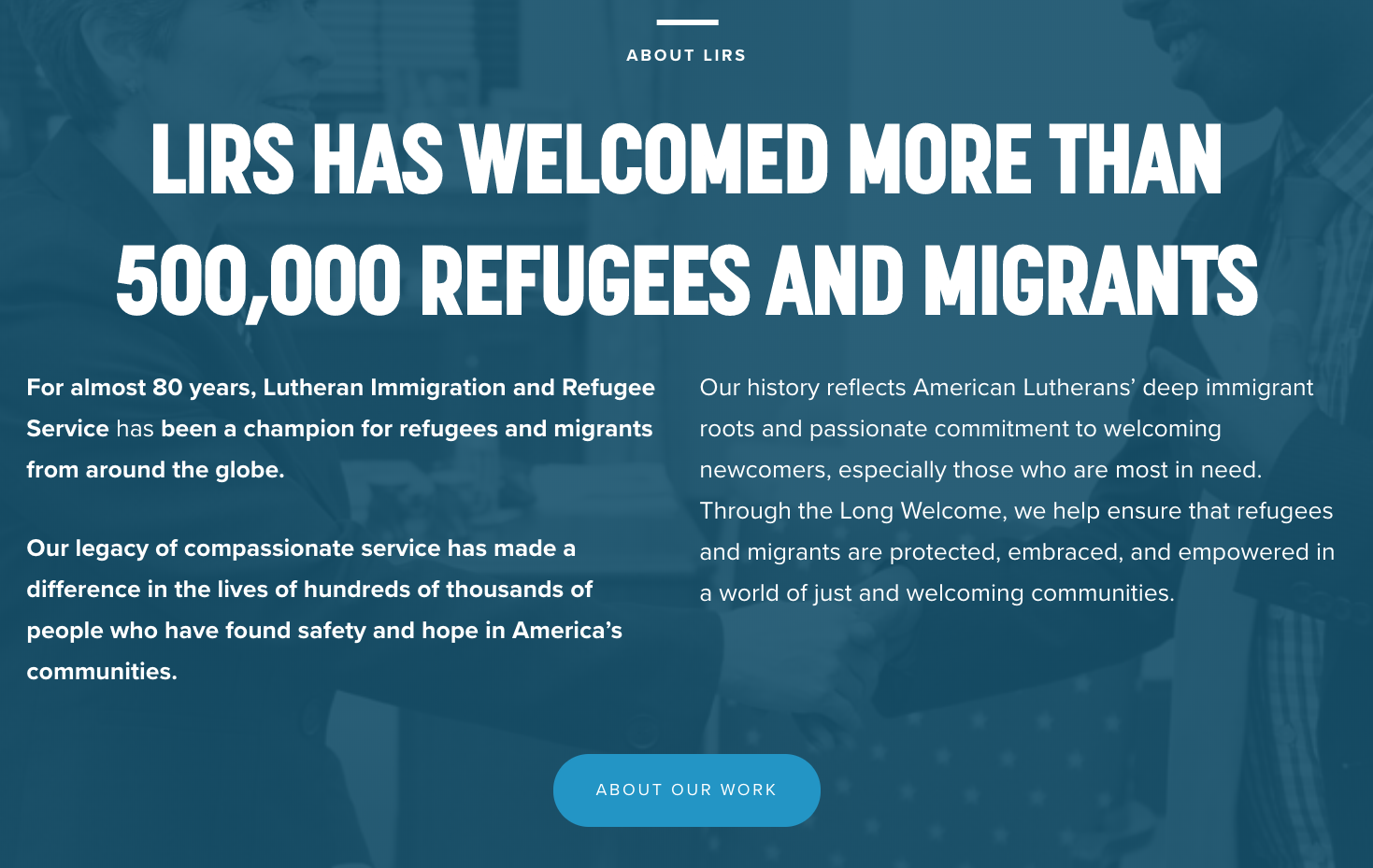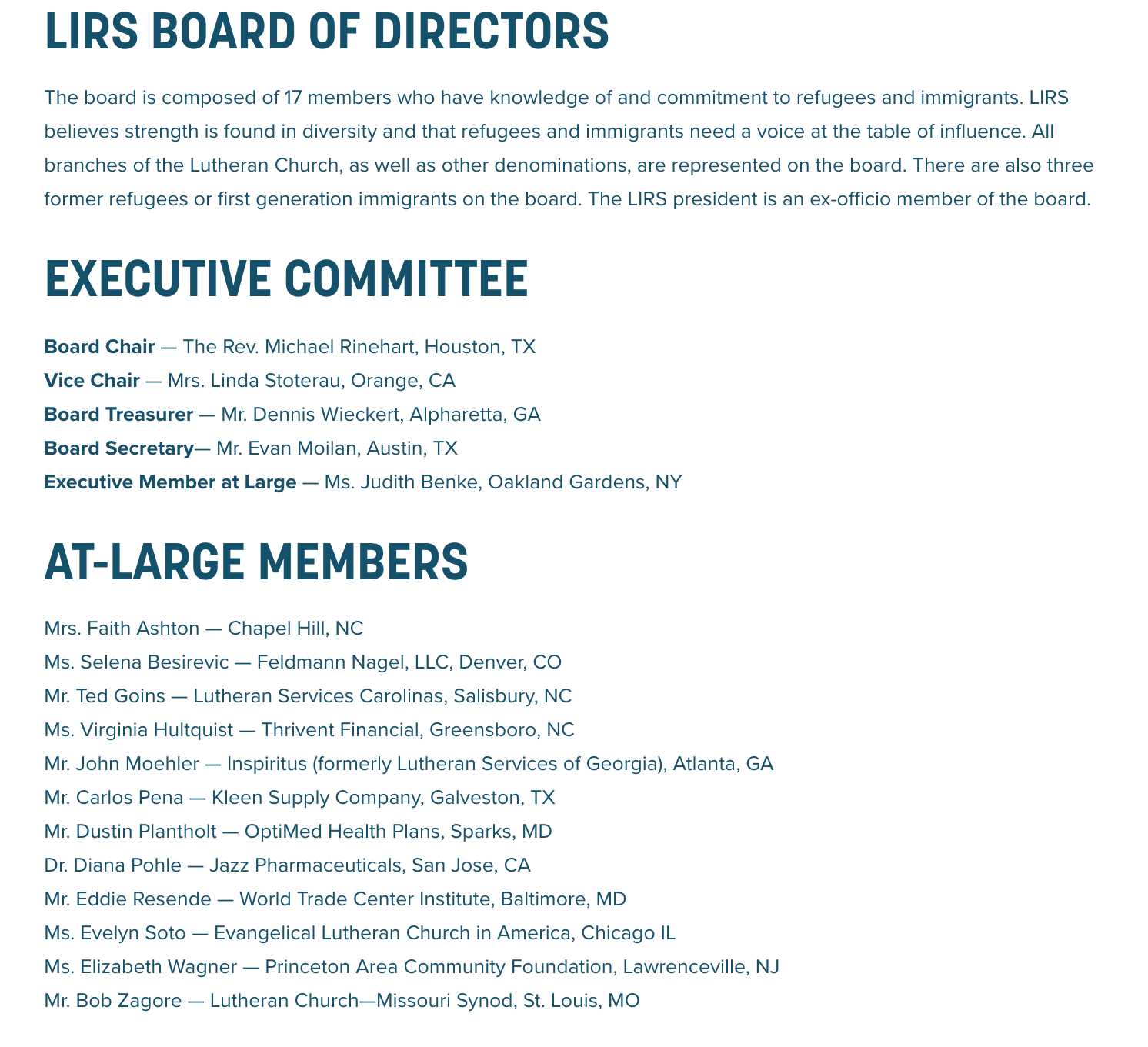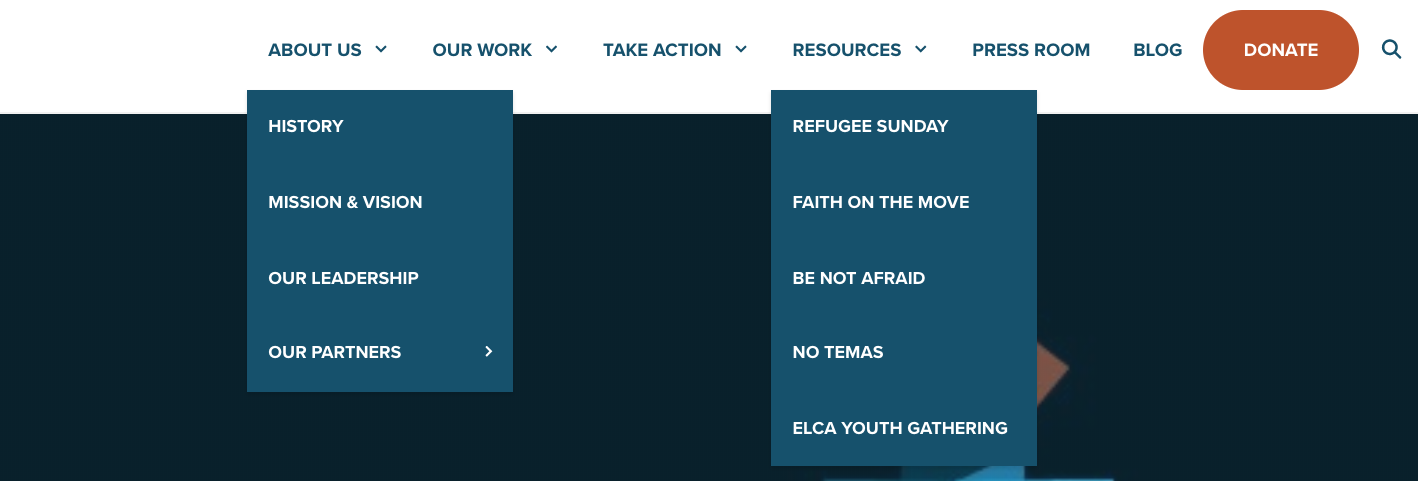Jordan Turner
Professor Licastro
English 256
11 February 2019
The “Lutheran Immigration and Refugee Service”, LIRS for short, is an non-profit organization in support of refugees and immigrants entering the states. In my analysis of the LIRS’ website, we’ll be going over the five different areas of a rhetorical analysis, “a method of describing the context in which an author wants to communicate his or her purpose or call for action to the intended audience in a genre” (Arola, Sheppard, Ball 22). The different areas we’ll be analyzing are the audience, purpose, context, author, and genre of the website, along with an analysis of the media included.
When understanding the intent, it’s good to start with who the content is intended for, I.e the audience. By taking a look at their navigation bar, the first thing that draws the reader’s eyes, is their orange DONATE button, located on the far right of the navigation bar. This is their primary audience, those who want to help their cause, AKA donators.
![]()
Screenshot from https://www.lirs.org
While the audience is who the text is intended for, there may be more than one intended/actual audience (Arola, Sheppard, Ball 22). Their second intended audience are advocates to help stay up-to-date with the legislative issues, while their third intended audience are volunteers. Detailed on the “take action” tab, LIRS goes into depth about how their readers/audience can help.
 screenshot from https://www.lirs.org/take-action/
screenshot from https://www.lirs.org/take-action/
By placing the option to learn more under each, it influences the audience to support and aid LIRS in their mission by doing research and participating in any of these options.
After understanding the intended audience, “it’s important to also consider the range of intentions”(Arola, Sheppard, Ball 23) or their purpose for showing us this information. Considering the information given to us, it’s safe to say that their overall intention for the text is to spread the word about their work and inform the public of their cause. This is further supported by the navigation bar, displayed on each separate page, holding multiple opportunities for the audience to either donate, volunteer, or read more information about their mission and purpose. In a sense, their website is essentially a huge advertisement for their history and what they do

 ..
..
Screenshots from https://www.lirs.org
and communicates multiple ways that others can help through becoming a volunteer and/or an advocate to help battle legislative issues through their medium/context.
It’s time to now consider the context, “which generally refers to where the text is located, how it is meant to be read, what surrounds it” (Arola, Sheppard, Ball 24). It’s important to think about why the author chose this medium, a website, in comparison to other ones available. After we we’ve gather about the audience and the purpose, the reason why the author chose this medium could’ve been in order to get their intention/purpose across as visually possible without having to bore the audience with multiple paragraphs, running the risk of losing their attention; this is supported by how on each page, there is an image or video.
 screenshot from https://www.lirs.org/about/
screenshot from https://www.lirs.org/about/
Before considering the genre of the context, the way the author (implied or actual) establishes credibility, is also something to note when conducting a rhetorical analysis. By including a sub-section within the “about us” tab, the author(s), or the people who run LIRS, establish credibility; Even though it does not go in depth about who they are or their backgrounds, it does include their beliefs.
 screenshot from https://www.lirs.org/our-leadership/
screenshot from https://www.lirs.org/our-leadership/
It’s important to note that the author(s) established a big reputation as “a champion for refugees and migrants from around the globe” (“Lutheran Immigration and Refugee Service.”). for almost 80 years. They go into depth about this by saying that they’ve helped over 500,000 refugees and immigrants.
The final part of the rhetorical analysis, is the genre of the context. The text can be defined as a newspaper as a broad definition, but in more specific terms, it can be defined as either journalism, realistic fiction, or as a documentary. It’s defined as a journalism/documentary in the sense that the context details LIRS’ work, mission, and the inclusion of credible news articles to support their information.

Screenshot from https://www.lirs.org/press/
While it’s defined as realistic fiction in the sense that everything that is happening is true to life, from the struggle of being a refugee/immigrant to their work and vision of helping them. The key features that support the genre’s I’ve identified are their inclusion of a blog, press room, and their history.
After finishing the analysis of the website, it’s time to analyze its media and the interface. The most important thing when analyzing the media is to consider the modes and affordances, including: color, font, information architecture, and user experience.
The color of the media presented to us follows a small range throughout (Light blue, Dark blue, orange, and white). the most noticeable is that their navigation bar highlights the DONATE button, drawing their reader’s attention instantly to that. Meanwhile, their font is consistent throughout the website, using only two fonts to keep the reader from getting confused or lost among a possible wide variety of fonts.

Screenshots from https://www.lirs.org
The information architecture is what keeps everything organized and neat in the media. LIRS keeps their information organized in a neat manner, everything is organized until the reader enters different section, each section holding information similar to each other in order to keep the same generally topic of the section consistent. This makes the User experience simple, creating a website that is fairly easy to navigate through, making it simple for reader’s of all ages to use.

Screenshots from https://www.lirs.org
In conclusion, The website of the non-profit organization, “Lutheran Immigration and Refugee Service”, gets the author’s point across is a smooth, organized manner. Each section has enough media and information to keep their audience intrigued and influences them to help or provide their services to the cause. By analyzing their website, a reader can effectively understand the purpose and context that the author(s) is educating them about.
Works cited
Arola, Kristin L.; Ball, Cheryl E.; Sheppard, Jennifer. Writer/Designer (Page 22). Bedford/St. Martin’s. Kindle Edition.
“Lutheran Immigration and Refugee Service.” LIRS, 6 Feb. 2019, www.lirs.org/.